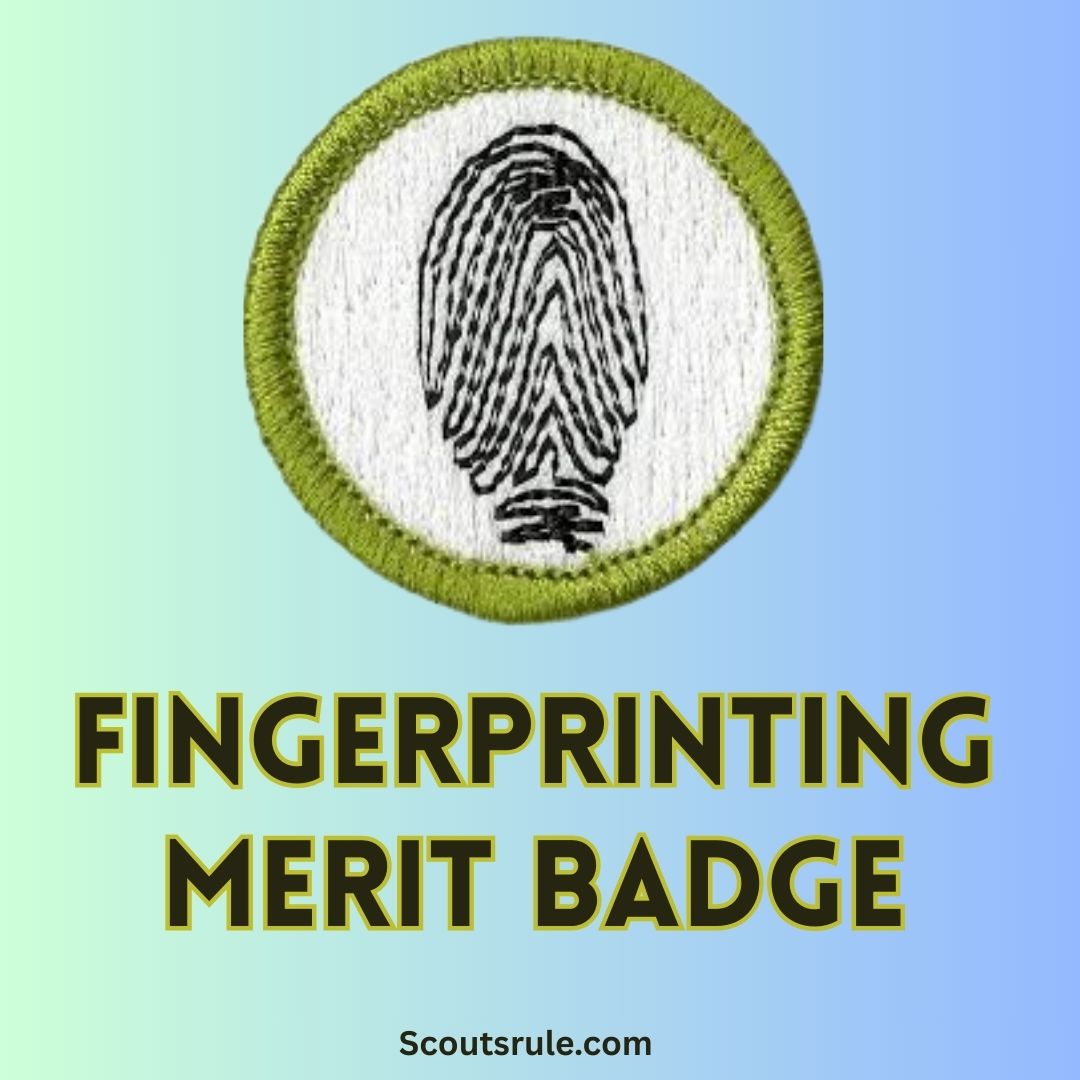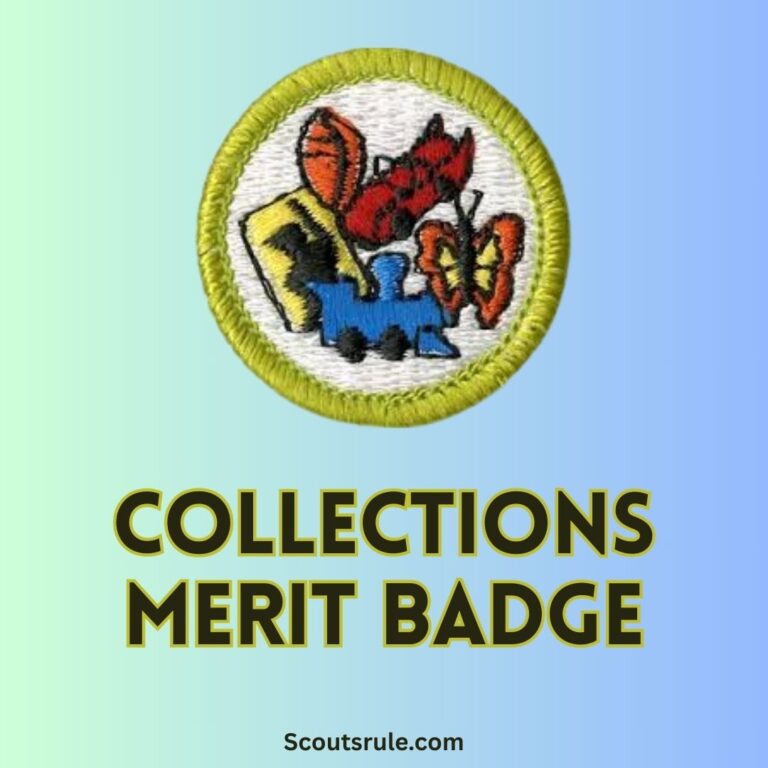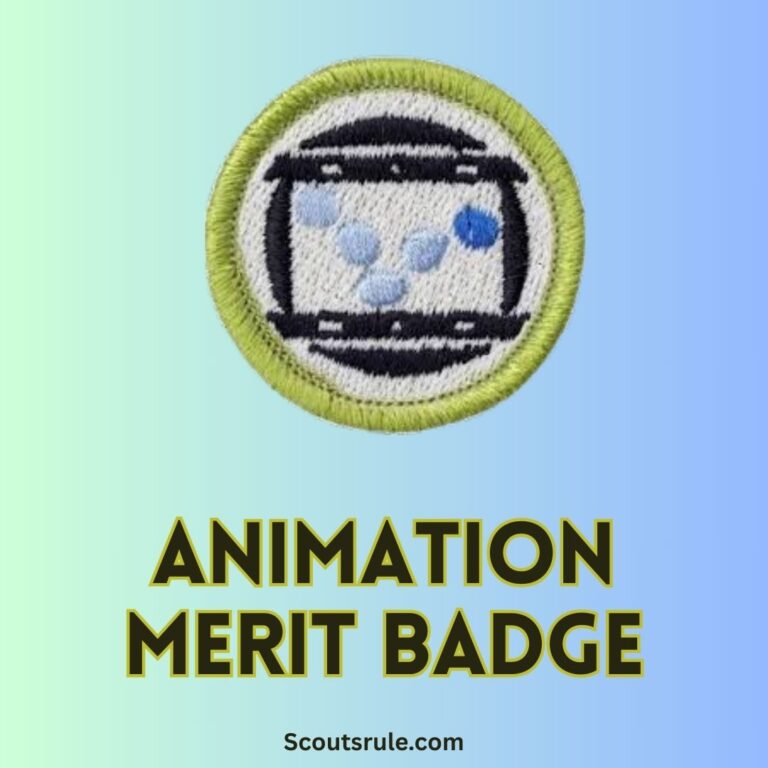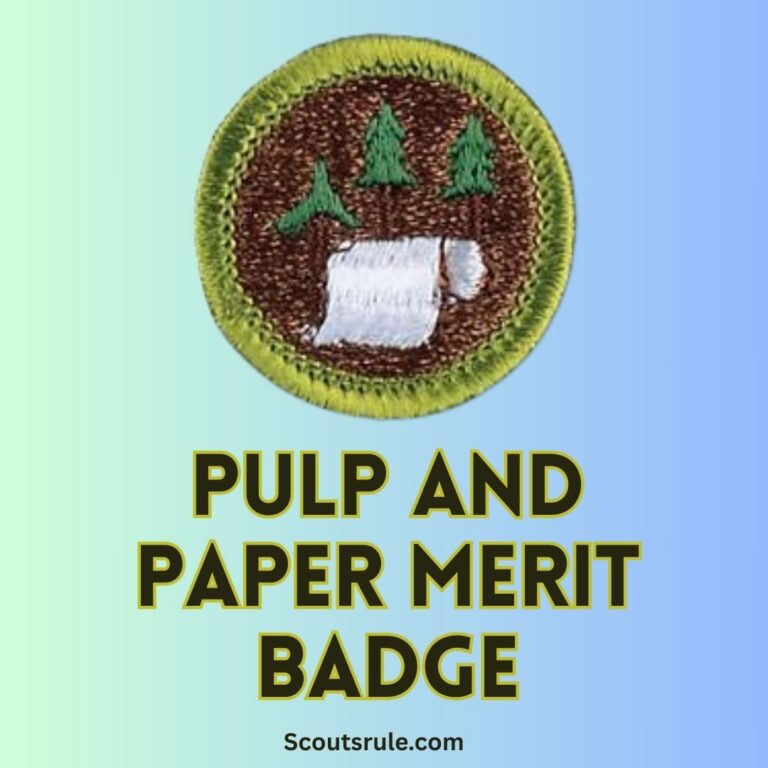
From ancient seals pressed into clay to cutting‑edge digital security, fingerprinting has long served as the indelible mark of identity. In the Boy Scouts of America’s Fingerprinting Merit Badge, young explorers learn that every ridge and whorl on their skin is more than just a part of their anatomy—it’s a unique signature that has revolutionized forensics and security worldwide. This article delves into every facet of the merit badge, from its historic origins to the hands‑on methods that you can use to capture, compare, and classify your own fingerprints. Let’s embark on a journey that blends historical insight, scientific inquiry, and creative self‑discovery.
Post Contents
- 1. Introduction to the Fingerprinting Merit Badge
- 2. Fingerprinting Merit Badge Requirements Overview
- 3. Short History of Fingerprinting
- 4. Differences Between AFIS and Biometric Fingerprint Systems
- 5. Exploring Fingerprints: Your Personal Connection to Science
- 6. Practical Techniques: Taking and Recording Clear Fingerprints
- 7. Identifying Basic Types of Fingerprint Patterns and Their Subcategories
- 8. Conclusion: Embracing the Past, Innovating for the Future
- 9. Frequently Asked Questions (FAQ)
- Final Reflections
1. Introduction to the Fingerprinting Merit Badge
The Fingerprinting Merit Badge offers Scouts a multifaceted exploration into the science of forensics and personal identification. It is a perfect blend of history, theory, and practical activities. In earning this badge, you learn not only how to take clear fingerprint impressions but also how to appreciate the small details that render each fingerprint unique. The skills acquired here extend beyond the badge itself—inspiring logical thinking, attention to detail, and an understanding of how ancient techniques have evolved into modern biometric systems.
By engaging deeply with this merit badge, Scouts gain hands‑on experience that encourages them to see science in everyday life. The badge requires an understanding of both the historical journey of fingerprinting and its current technological applications, setting the stage for potential future careers in forensics, law enforcement, and cybersecurity.
2. Fingerprinting Merit Badge Requirements Overview
Before delving into specifics, it is helpful to outline the core topics covered by the Fingerprinting Merit Badge. The curriculum is organized around the following areas:
- Short History of Fingerprinting
- Differences Between AFIS and Biometric Fingerprint Systems
- Finger Exploration and Fundamental Scientific Principles:
- Finding Friction or Papillary Ridges on Your Body
- Understanding the Two Basic Principles Behind Fingerprint Science
- Learning How Experts Use Fingerprints to Positively Identify Someone
- Practical Techniques in Fingerprinting:
- How to Take Clear Fingerprints Using Rolled and Plain Impressions
- How to Record Fingerprints Using Tape, Pencil, and Paper
- Identifying Basic Types of Fingerprint Patterns and Their Subcategories:
- Arches, Loops, and Whorls
- Subcategories such as Plain Arch, Tented Arch, Radial Loop, Ulnar Loop, Double Loop, Plain Whorl, Central Pocket Loop Whorl, and Accidental Whorl
- Conclusion and Reflections
- Frequently Asked Questions (FAQ)
Each of these elements is designed to ensure that Scouts not only gain practical skills but also develop a well‑rounded understanding of forensic science as it relates to fingerprinting.
3. Short History of Fingerprinting
Early Beginnings
Fingerprinting is not a modern development; it dates back thousands of years. Ancient civilizations—such as those in Babylon and China—recognized the unique qualities of fingerprints. Early records show that fingerprints were used as signatures on clay tablets and seals on important documents. This practice underscored the idea that a personal mark could serve as a reliable identifier, a principle that remains at the heart of fingerprinting even today.
The Birth of Scientific Inquiry
The systematic study of fingerprints began in the 17th and 18th centuries. Early pioneers like Dr. Nehemiah made detailed observations of the intricate ridges on human fingertips. By the late 1700s, scientists noticed that no two people had identical patterns. This observation laid the groundwork for later scientific advancements. During the 19th century, figures such as Sir William Herschel, Sir Francis Galton, and Sir Edward Henry advanced the study by developing classification systems to analyze and compare fingerprint patterns.
Fingerprinting in Forensics
A dramatic turning point occurred in the late 1800s when fingerprinting transformed from an administrative tool into a vital instrument in forensic science. In landmark cases, latent prints—those left unintentionally at crime scenes—helped identify culprits long before DNA analysis was possible. The work of early forensic scientists proved conclusively that fingerprints were both unique and permanent, making them one of the most reliable forms of evidence in criminal investigations.
Through this historical voyage—from ancient practices to modern forensic breakthroughs—we see a clear evolution fueled by the quest for precision and justice. The short history of fingerprinting not only serves as an excellent introduction for Scouts but also illustrates how scientific curiosity and practical necessity can lead to enduring innovations.
4. Differences Between AFIS and Biometric Fingerprint Systems
In today’s world, fingerprint technology has evolved into two distinct yet interconnected arenas: Automated Fingerprint Identification Systems (AFIS) and biometric fingerprint systems used for security purposes.
Automated Fingerprint Identification Systems (AFIS)
AFIS is primarily used by law enforcement agencies and forensic professionals. This computerized system digitizes, analyzes, and compares fingerprint data against vast databases. The use of sophisticated algorithms in AFIS helps quickly match unknown prints from a crime scene with those already on record. This system is designed to handle large volumes of data—a crucial feature for criminal investigations. With AFIS, the process has become faster, more accurate, and less reliant on manual analysis, paving the way for solving crimes with exceptional efficiency.
Biometric Fingerprint Systems
On the other hand, biometric fingerprint systems are commonly seen in daily life—they are the technology behind unlocking your smartphone, accessing secured buildings, or authenticating a transaction. These systems, while similar in that they capture and analyze fingerprint data, prioritize speed, convenience, and user-friendliness. Instead of scanning through huge datasets like AFIS, biometric systems are optimized for personal security and access control.
Key Differences
- Purpose: AFIS is geared toward forensic investigations and law enforcement, whereas biometric systems are used for everyday access security.
- Scale: AFIS processes large databases with complex pattern matching, while biometric systems focus on quick, localized authentication.
- Technology: Although both systems rely on fingerprint recognition technologies, AFIS generally uses more intricate and resource‑intensive algorithms to ensure accuracy in criminal identification.
Understanding these differences enriches the learning experience, demonstrating the versatility of fingerprint science and its capacity to serve both judicial integrity and personal security.
5. Exploring Fingerprints: Your Personal Connection to Science
A crucial component of the Fingerprinting Merit Badge is a hands‑on exploration that begins with your own body. This section guides you through discovering the friction or papillary ridges on your skin and understanding the fundamental scientific principles that underpin their use in identification.
(a) Find the Friction or Papillary Ridges on Your Body
Every Scout is encouraged to run a finger over a clean, smooth surface of skin to observe the tiny raised lines known as friction ridges—or papillary ridges. These are the very features that create your personal fingerprint. You might notice these patterns most clearly on your fingertips, but similar, albeit less distinct, patterns exist on your palms and even the soles of your feet. Engage with this exercise as both a scientific inquiry and a self‑reflection: you are looking at the part of you that, quite literally, leaves its mark wherever you touch.
(b) The Two Basic Principles Behind Fingerprint Science
Fingerprint science rests on two foundational principles:
- Uniqueness: No two individuals share the same fingerprint. Even identical twins have distinct differences in their ridge patterns. This uniqueness arises from a combination of genetics and random environmental influences during fetal development.
- Permanence: Once formed, fingerprint patterns remain largely unchanged throughout your lifetime. Even if skin is damaged, the overall pattern typically survives, making fingerprints a consistent means of identification.
These principles assure forensic experts that fingerprints are a reliable source of evidence and token of identity. They form the scientific backbone that supports every technique taught in the merit badge curriculum.
(c) How Experts Use Fingerprints to Positively Identify Someone
Experts compare detailed features within the fingerprint—such as ridge endings, bifurcations, and tiny minutiae points. By examining these minute characteristics, professionals can establish a positive identification. Whether using magnification or sophisticated software, the process involves matching the physical evidence from a crime scene with a known fingerprint in a database. This meticulous comparison process is a direct manifestation of the scientific principles of uniqueness and permanence.
6. Practical Techniques: Taking and Recording Clear Fingerprints
One of the most exciting parts of the Fingerprinting Merit Badge is the opportunity to put theory into practice. This section provides detailed instructions on how to take clear fingerprints and record them using traditional tools.
(a) How to Take Clear Fingerprints Using Rolled and Plain Impressions
To capture a high‑quality fingerprint, you typically use one of two methods:
- Rolled Impressions: This technique involves “rolling” your finger from one side to the other to capture every ridge detail. To do this, evenly apply ink to your fingertip, firm your hand over a clean piece of paper, and roll your finger from one side to the other. This movement ensures that the fingerprint captures a continuous, unbroken image of the friction ridges.
- Plain Impressions: For a plain impression, gently press your finger onto the paper without rolling. While this method is simpler, it can yield less detail than a rolled impression because not all the ridges are captured.
Both techniques demonstrate the need for precision and patience. Practicing these methods not only improves your technical ability but also deepens your appreciation for the intricate patterns that make up your unique identity.
(b) How to Record Fingerprints Using Tape, Pencil, and Paper
In some sessions, Scouts are encouraged to use everyday items to record fingerprints:
- Materials: Gather a clear adhesive tape, a pencil, and a piece of plain white paper.
- Method: Press your inked fingertip lightly onto the tape, then carefully affix the tape onto the paper. Use a pencil to label the prints with the proper finger designation (for example, “index fingerprint” or “thumb print”). This process reinforces valuable lessons in careful documentation and archival techniques—skills that translate directly into the careful handling of forensic evidence.
Recording fingerprints in this manner emphasizes that sometimes the simplest tools can provide robust results when used with care and technique.
7. Identifying Basic Types of Fingerprint Patterns and Their Subcategories
A core component of the merit badge curriculum is learning how to identify and classify fingerprint patterns. This skill is fundamental to the broader practice of fingerprint analysis. Generally, fingerprints fall into three basic categories:
A. Arches
Arches are characterized by ridges that enter from one side, rise slightly in the center, and exit on the opposite side. Although arches are the simplest type, they have two recognized subcategories:
- Plain Arch: This pattern features a gentle, smooth curve with minimal uplift in the center.
- Tented Arch: In contrast, tented arches have a more pronounced central ridge, giving the appearance of a tent’s peak.
B. Loops
Loops are the most common fingerprint pattern. The ridges enter from one side, recurve, and exit on the same side. Loops also come in several variations:
- Radial Loop: The ridge flow in a radial loop is directed toward the thumb-side of the hand.
- Ulnar Loop: Conversely, an ulnar loop flows toward the little finger.
- Double Loop: In some cases, two loops intersect or overlap, forming a “double loop”—a less common variant that requires particular attention when classifying prints.
C. Whorls
Whorls are circular or spiral patterns that contain two or more deltas (triangular regions). They are more complex and are subdivided into:
- Plain Whorl: A simple circular or spiral pattern with no unusual twists.
- Central Pocket Loop Whorl: This pattern combines elements of loops and whorls with a distinct pocket-like formation in the center.
- Accidental Whorl: When the fingerprint does not fit neatly into any of the standard categories, it is often termed an accidental whorl. These prints are formed by a combination of features and usually defy traditional classification.
Learning to identify these basic patterns—and their subcategories—sharpens observational skills and reinforces the scientific foundation of fingerprint analysis. It also illustrates the beauty and complexity inherent in our natural design.
8. Conclusion: Embracing the Past, Innovating for the Future
The Fingerprinting Merit Badge is so much more than a challenge to earn a badge; it is an invitation to explore the intersection of history, science, and technology. By uncovering the unique patterns etched into our fingertips, Scouts gain direct access to a legacy of forensic ingenuity that dates back millennia. From the simple act of rolling an inked finger across paper to the advanced digital databases of AFIS, fingerprinting encapsulates the idea that every individual leaves a mark—a mark that tells a story of identity, uniqueness, and continuity through time.
By mastering the various techniques—whether it’s finding your own friction ridges, recording them accurately with tape and pencil, or classifying them into arches, loops, and whorls—Scouts are prepared not only to meet the merit badge requirements but also to embrace a mindset of precision, inquiry, and lifelong learning. The meticulous observation and documentation skills honed in this process are applicable in countless real‑world scenarios, from everyday security to future careers in forensic science, cybersecurity, and beyond.
Ultimately, the journey you undertake to earn the Fingerprinting Merit Badge is one of both personal discovery and professional inspiration. It is a vivid reminder that even the smallest details—those unique ridges on your fingertips—carry immense value, shining a light on the potential that exists when art and science converge.
9. Frequently Asked Questions (FAQ)
Q1. What is the main purpose of the Fingerprinting Merit Badge?
The merit badge aims to educate Scouts about the science behind fingerprinting, its historical development, and practical techniques for capturing and analyzing fingerprints. It introduces fundamental forensic concepts and encourages an appreciation for the unity between art, science, and identity.
Q2. How do AFIS and biometric fingerprint systems differ?
AFIS (Automated Fingerprint Identification Systems) is used primarily for forensic and law enforcement purposes—scanning large databases for criminal identification. In contrast, biometric fingerprint systems are employed in everyday security, such as unlocking smartphones or accessing secure locations, prioritizing speed and ease‑of‑use.
Q3. Why is fingerprint uniqueness so important?
Fingerprint uniqueness ensures that every individual can be positively identified through their touch. This biological certainty underpins the reliability of fingerprints as forensic evidence and forms the basis for many security systems used today.
Q4. What are the primary types of fingerprint patterns?
Fingerprints generally classify into three basic categories:
- Arches: Including plain arches and tented arches
- Loops: Including radial loops, ulnar loops, and double loops
- Whorls: Including plain whorls, central pocket loop whorls, and accidental whorls
Q5. How can I take a high‑quality fingerprint impression?
Practice is key! For rolled impressions, apply ink evenly and roll your finger fully to capture every ridge. For plain impressions, ensure that your finger presses gently and squarely on the paper. Recording the prints with a combination of tape, pencil, and paper reinforces careful documentation.
Q6. What are friction or papillary ridges?
These are the raised lines on your skin that form the unique pattern of your fingerprint. They are the physical features that experts analyze to determine identity, based on their unique and permanent properties.
Q7. How does learning these techniques benefit me beyond earning a badge?
The skills acquired through the badge help develop meticulous observation, documentation, and analytical capabilities. These skills are valuable in various fields, including forensic science, cybersecurity, and any career that prizes attention to detail and innovative problem-solving.
Q8. Can I eventually pursue a career in forensics or biometric security after earning this badge?
Absolutely. The knowledge and hands‑on experience you gain lay a solid foundation for future academic or professional pursuits in forensic science, law enforcement, cybersecurity, and related fields. The badge inspires critical thinking and fosters a spirit of inquiry that can lead to innovative career paths.
Final Reflections
The Fingerprinting Merit Badge serves as a microcosm for the broader intersections of history, technology, and human uniqueness. It challenges you to recognize that every fingerprint tells a story—a story of evolution, of scientific advancement, and of personal identity. As you continue to explore and master the techniques associated with fingerprinting, remember that the smallest details in life often hold the most significant truths.
May this exploration of fingerprint science inspire you not only to earn your merit badge but to appreciate the intricate tapestry of heritage and innovation that defines us all.
In your quest for knowledge, continue to ask questions, experiment with new methods, and let your curiosity guide you to even greater discoveries. Fingerprints, like all natural phenomena, remind us that beauty can be found in every detail—a lesson that resonates far beyond a single badge or a single field of study.

Hi, Robin here, A former lead Scout and here I share my inspiring stories about USA Scouts, leadership, adventure, how to guides and more.






